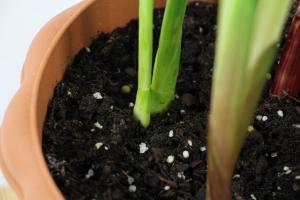How to Colour Plant Pots
Plant pots are a great way to add a pop of colour to any space, whether used indoors or outdoors. If you want to add even more personality to your plant pots, colouring them is a fun and creative option. Here are some tips for how to colour your plant pots.
Choose the Right Type of Paint
Before you start painting your plant pots, it's important to choose the right type of paint. The type of paint you use will depend on the material your plant pots are made from. For example, if your plant pots are made of clay, you'll want to use a paint that's designed for porous surfaces. If your plant pots are made of plastic or resin, you'll want to use a paint that's designed for use on non-porous surfaces.
Prepare Your Plant Pots
Before you start painting your plant pots, it's important to prepare them properly. This will ensure that the paint adheres well and lasts longer. First, wash your plant pots with soap and water to remove any dirt or dust. If your plant pots have any rough or uneven areas, you can sand them down to create a smooth surface for painting. Finally, let your plant pots dry completely before applying paint.
Apply Your Paint
Once your plant pots are clean and dry, you can start painting them. If you're using a spray paint, make sure to hold the can at least six inches away from the plant pot and spray in a back-and-forth motion. If you're using a brush, use light, even strokes to apply the paint. It's better to apply several thin coats of paint rather than one thick coat to ensure an even finish. Let each coat of paint dry completely before applying the next one.
Customize Your Plant Pots
Now that your plant pots are painted, you can customize them even further. You can add stencils or stickers to create patterns or designs. You can also use markers or paint pens to add additional details or text. The possibilities are endless, so have fun experimenting with different ideas.
Seal Your Plant Pots
Once your plant pots are painted and customized, you'll want to seal them to protect the paint and ensure that they last as long as possible. You can use a clear sealer spray to protect your plant pots from water damage, sun damage, and general wear and tear. Make sure to follow the instructions on the sealer spray to ensure that it's applied correctly.
Conclusion
Colouring plant pots is a fun and creative way to add personality to any space. By following these tips, you'll be able to colour your plant pots in no time. Just remember to choose the right type of paint, prepare your plant pots well, apply your paint in thin coats, and customize your plant pots even further. With a little creativity and imagination, your plant pots will be transformed into unique and colourful works of art.

 how many times do yo...
how many times do yo... how many planted tre...
how many planted tre... how many pine trees ...
how many pine trees ... how many pecan trees...
how many pecan trees... how many plants comp...
how many plants comp... how many plants can ...
how many plants can ... how many plants and ...
how many plants and ... how many pepper plan...
how many pepper plan...
































